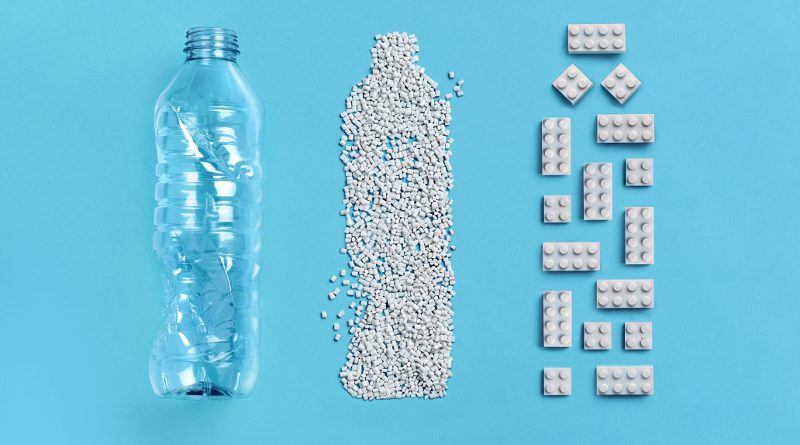The Lego Group reveals first prototype brick made from recycled PET
The Lego Group unveiled a prototype brick which uses PET plastic from discarded bottles. It is the first brick made from a recycled material to meet the company’s quality and safety requirements.
A team of more than 150 people are working to find sustainable solutions for LEGO products. Over the past three years, materials scientists and engineers tested over 250 variations of PET materials and hundreds of other plastic formulations. The result is a prototype that meets several of their quality, safety and play requirements – including clutch power.
Vice President of Environmental Responsibility at the Lego Group, Tim Brooks said: “The biggest challenge on our sustainability journey is rethinking and innovating new materials that are as durable, strong and high quality as our existing bricks – and fit with LEGO elements made over the past 60 years. With this prototype we’re able to showcase the progress we’re making.”
It will be some time before bricks made from a recycled material appear in the company’s product boxes. The team will continue testing and developing the PET formulation and then assess whether to move to the pilot production phase. This next phase of testing is expected to take at least a year.
The prototype is made from recycled PET sourced from suppliers in the United States that use US Food & Drug Administration (FDA) and European Food Safety Authority (EFSA) approved processes to ensure quality. On average, a one-litre plastic PET bottle provides enough raw material for ten 2 x 4 Lego bricks.
Patent-pending formulation
The patent-pending material formulation increases the durability of PET to make it strong enough for Lego bricks. The process uses a bespoke compounding technology to combine the recycled PET with strengthening additives.
The recycled prototype brick is the latest development in making the Group’s products more sustainable. In 2020, the company announced it will begin removing single-use plastic from its boxes. In 2018, it began producing elements from bio-polyethylene (bio-PE), made from sustainably sourced sugarcane. Many Lego sets contain elements made from bio-PE which is perfect for making smaller, softer pieces such as trees, branches, leaves and accessories for minifigures. Bio-PE is not currently suitable for making harder, stronger elements such as the iconic Lego bricks.

